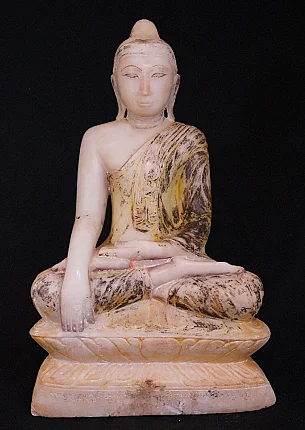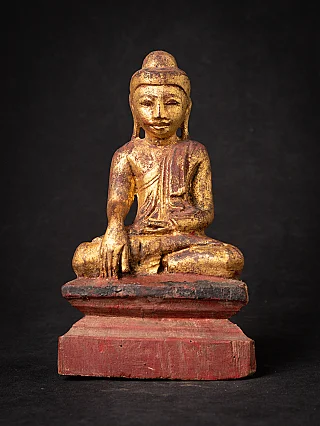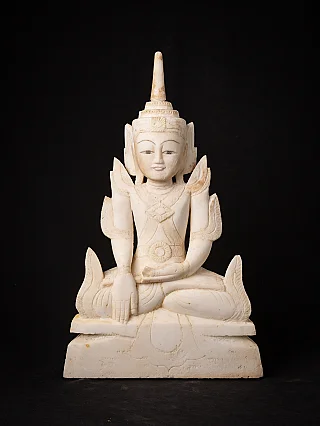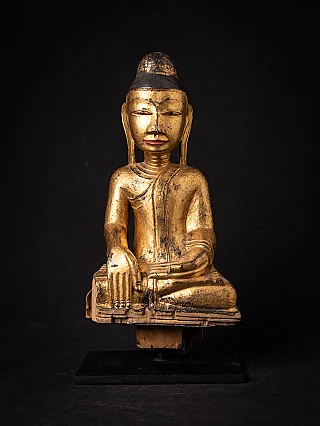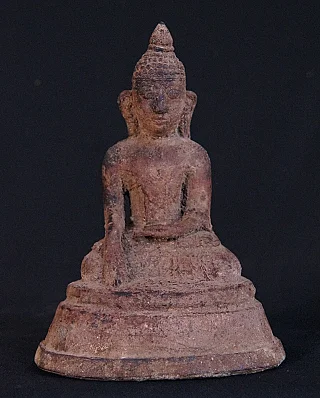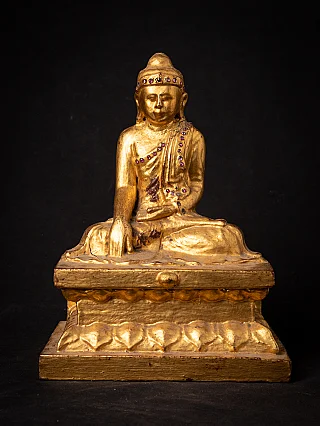Kaundinya - First Disciple and Arahant
Author : Peter Vredeveld

Kaundinya was the first disciple of Lord Buddha. Kaundinya was the royal Shakyan scholar who predicted that Siddhartha would become Lord Buddha, and Kaundinya was the first disciple of Buddha to become arahant.
Kaundinya was the first disciple of Lord Buddha and the first to become an arahant. Kaundinya was a Brahmin who lived and worked as a royal court scholar at Kapilvastu (now in Lumbini of Nepal) under King Suddhodhana of the Shakyas. Kaundinya was also known as Ajnata Kaundinya. Kaundinya is one of the crucial figures in the life of Lord Buddha. He was the main reason King Suddhodhana decided to make intricate arrangements for the young prince Siddhartha. He is one of the senior Buddhist monks of the Order of the Sangha during the lifetime of Lord Buddha.
Kaundinya and four other scholars decided to follow the young prince Siddhartha on the Order of King Suddhodhana. Ajnata Kaundinya was considered foremost among the five initial disciples of Lord Buddha. The other four disciples were Bharika, Baspa, Mahanama, and Asvajit. Together, they were known as Pancavaggiya ( The Group of Five ) or Pancaka Bhadravargiya (The Group of Five Fortunate Ones).
History
Kaundinya was born into a reputed Brahmin family of Donavatthu, which was near to Kapilvastu. He was very talented and mastered the three Vedas and the science of Physiognomy at a young age. The science of Physiognomy was also called Lakhana Manta. He became the royal Brahmin scholar in the Shakya Kingdom of Kapilvastu under King Suddhodhana.
When Prince Siddhartha was born, many talented scholars were summoned, and Kaundinya was one of them. They were summoned to predict the fate of the young prince Siddhartha. All the other scholars offered a twofold prediction. Prince Siddhartha would choose royal life and become supreme king "Chakravarti" or a supreme religious leader. But Kaundinya was the only scholar who predicted that Prince Siddhartha would become the supreme religious leader and be called Buddha.
After predicting young Prince Siddhartha's fate, Kaundinya vowed to follow him when he became ascetic. On the other hand, King Suddhodhana wanted Prince Siddhartha to become supreme King and expand his empire. He made various arrangements so the prince would be far away from all worldly suffering. But one day, Prince Siddhartha persuaded King Suddhodhana to leave his palace. But King Suddhodhana made such arrangements that the prince would not see any beggars, older adults, or sick people. Despite the King's tremendous effort, Siddhartha saw four sights that later turned his mind, and he chose ascetic life over royal life.
Arahanthood of Kaundinya

After Prince Siddhartha left the royal palace and chose ascetic life, five scholars, including Kaundinya, followed Prince Siddhartha after getting permission from King Suddhodhana since he was scared about his son's safety. Kaundinya and the other four scholars were hoping Prince Siddhartha would attain Enlightenment after he mastered the teachings of Arada Kalama and Udraka Ramaputra and practiced self-mortification. After six years of practicing self-mortification, Prince Siddhartha experienced a near-death situation. Later, Prince Siddhartha decided not to practice such practices; Pancavaggiya thought he would not attain Enlightenment and moved away from the prince and went to Isipatana, which was near Varanasi, so that they could continue their practices.
After Siddhartha achieved Nirvana and became Buddha, he sought his two masters, Arada and Udraka, to teach them the way of Dharma. Realizing that both were dead, Gautama Buddha continued his journey to find the Pancavaggiya and teach them. At first, the five scholars, including Kaundinya, denied his knowledge, but they offered him a seat with them. But they could notice that Buddha had changed from when they left him and accepted his knowledge. Then Buddha preached Dhammacakkappavattana Sutta, which includes the Four Noble Truths and Noble Eightfold Path. Kaundinya became the first disciple, and the other four also became the disciples of Buddha. After five days, upon hearing subsequent Anattalakkhana Sutta, which was about no-self or soullessness, Kaundinya attained full arahants.
After Enlightenment
After attaining Enlightenment and becoming a member of the Order of Sangha, Buddha and his five disciples traveled to spread the Dharma in the Gangetic Plains of India. After spending some time in Sangha, Kaundinya retired from the Order. According to the history of the Buddhist tradition, there were two reasons that Kaundinya retired from the Order. The first was the inconvenience with two chief disciples of Buddha, Sariputra and Moggallana. Being the senior monk of the Sangha, he had to sit behind Lord Buddha, whereas both disciples sat at his side. Since the two chief disciples were not feeling uncomfortable but couldn't question Lord Buddha's decision, he left the Sangha so that no problem would arise. The other reason was that Kaundinya wanted to continue his religious practice in a quieter place. Before Kaundinya died, he went to Lord Buddha for the last farewell, kissed Buddha's feet, and stroked them with his hand. Kaundinya was cremated on a sandalwood pyre, and the ceremony was performed by Anuradha, one of the ten chief disciples of Lord Buddha. Five hundred other monks attended the ceremony.
Share this page





















